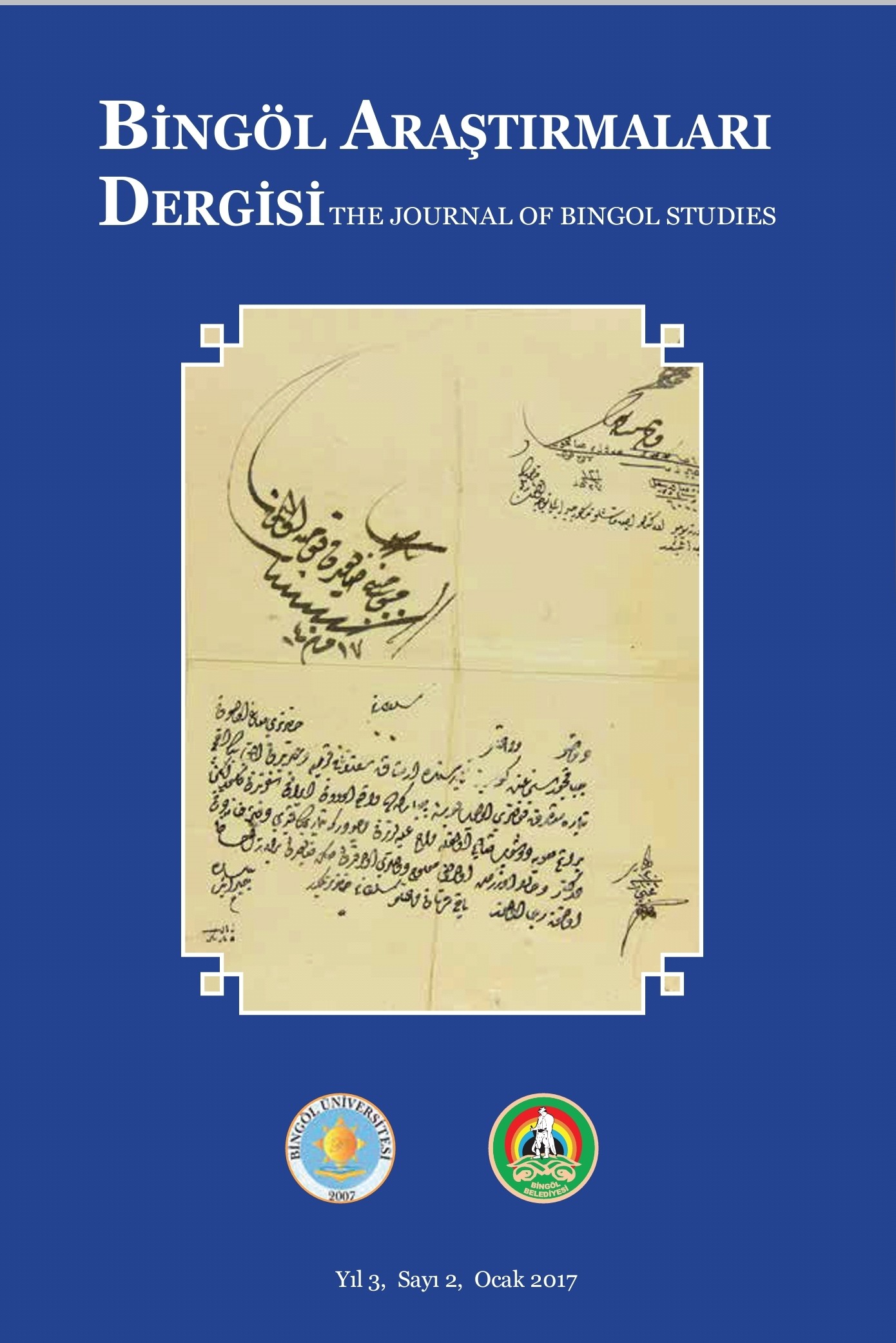HALK MASALLARININ MODERN TOPLUMA AKTARILMASI VE MASAL AKTARIMLARINDA TESPİT EDILEN FORMÜLLER
Gelenekçiliği, geleneğin yüzyıllar boyunca değişmeden nesilden nesile aktarılması olarak anlamak yanlıştır. Gelenek hangi toplumda yaşarsa yaşasın, içinde yaşadığı sosyal çevrelerden gelen ilke ve kültür öğelerini her zaman üzerinde taşıyacaktır. Masal anlatan, türküler söyleyen, halay çeken insanlar yaratma dürtüsüne sahip insanlardır. Bu bireyler ya kendi iradeleriyle, yanlış bir hatırayla ya da seyirciyi memnun etmek için geleneği bir ölçüde değiştirmektedirler. Böylece her yeni anlatıda, anlatıcının kişisel yaratma dürtüsünden ve toplumsal çevrenin koşullarından, geleneksel olandan inen zamansallıkla bir değişim yaşanır. Benzer şekilde, herhangi bir bireyin/öznenin eylemlerinin diğer bireylerle özneler arası etkileşim yoluyla ortaya çıktığını düşünüyoruz. Masal anlatma edimini, bu dinamik sürecin aynı zamanda öznelerarası olduğunu da söyleyebiliriz. Bu olay, yalnızca icracı-seyircinin karmaşık etkileşimleri yoluyla değil, aynı zamanda öznelerin teması ve bilgilerinin değiş tokuşu yoluyla sürekli olarak kurulur ve yeniden kurulur. Masal anlatma sürecini/performansını etkileyen birden fazla faktörü anlamak için bir deney yaptık ve özellikle modern toplumdaki masal anlatımındaki öznelere/bireylere ve onların işlevlerine bakmak istedik. Çalışmamızda Annti Aarne & Stith Thompson‘un “The Types of Folktales: A Classification and Bibliography” adlı çalışmasındaki motif- indeks kataloğu “Çembel Tiyar” adlı halk masalına uyarlanarak sınıflandırılmıştır. Yapılan çalışmada Van ilinde 25 katılımcı ile görüşülmüş, masalın zamana ve mekana göre ne gibi değişikliklere uğradığı örneklerle kısaca belirtilmiştir. Deneyimizin sonunda eğitim durumu, gelenek, değer yargıları ve sosyal çevrenin masalın içeriğinde ne gibi ciddi etkileri olduğu belirtilerek masalın statik değil, dinamik bir yapısının olduğu gözlemlenmiştir. Çalışma, alanda derleme yapacak araştırmacılara, aktarım sürecinde fiziki şartların da göz önünde bulundurulması gerektiğini kısaca örneklendirmiştir. Bu bağlamda, çalışmanın derleme yapacak araştırmacılara teknik anlamda katkı sunacağı kanısındayız.
Anahtar Kelimeler: Halk Masalı, Formül, Gelenek, Transfer, Dinleyici, Anlatıcı.
THE TRANSFERRING OF FOLK TALES TO MODERN SOCIETY AND THE FORMULAS DETECTED IN THE TRANSFER OF FAIRY TALES
We believe that any text in a culture is formed in the interaction between texts, and in Bartlett's words, “copywriters draw on and variously refer to other texts of their own or another culture, both old and new.” It is wrong to understand traditionalism as the transfer of tradition from generation to generation without changing over the centuries. Tradition changes to a certain extent and there is no tradition that does not change over time. No matter which society the tradition lives in, it will always carry the principles and cultural elements from the social circles in which it lives. People who tell tales, sing folk songs and dance halay are people who have the urge to create. Either of their own volition, with a false memory, or to please the audience, they change the tradition to some extent. Thus, in each new narrative, a change is experienced with a temporality descending from the narrator's personal impulse to create and the conditions of the social environment, from the traditional one. Similarly, we think that the actions of any individual/subject emerge through intersubjective interaction with other individuals. Accepting folktale narrating act as a communicative process we can say that this dynamic process is intersubjective as well. This event is continually constituted and reconstituted not only through the complex interactions of the performer-audience but also the contact of subjects and the interchange of their knowledge. To understand multiple factors which effect folktale narrating process/performance we did an experiment and wanted specially to look at subjects/individuals and their functions in folktale narration in modern society. Herewith we will present the results of our experiment. We believe that this study, which we support under various titles and examples, will make a technical contribution to researchers who will make compilations in the field.
___
- Aarne, A. and THOMPSON, S. (1961), The types of folktales: a classification and bibliography. Helsinki: Academia Scıentıarum Fennıca.
- Allen, B. (1990). The genealogical landscxape in sense of place, american regional culture. (eds. Barbara Allen-Thomas J. Schlereth). Kentucky: Th University Press of Kentucky.
- Anderson, W. (1951). Ein vonkskundliches experiment. Helsinki : Folklore Fellows Communicatrion Publish.
- ------------------. (1956). Eine neue arbeit zur experimentellen volkskunde. Helsinki: Folklore Fellows Cummunications, No,168.
- Azadowski, M. (1992). Sibiryadan bir masal anası. (Çev. İlhan Başgöz). Ankara: Kültür Bakanlığı yayınları.
- Bartlett, W. H. (1917). Some experiments of the reproduction of folk stories. Prentice-Hall: The Study of Folklore, Vol. 243- 258.
- Boratav, P. N. (1969). Az gittik uz gittik. Ankara: Bilgi Yayınevi.
- Çobanoğlu, Ö. (2012). Halk edebiyatına giriş-I. Anadolu Üniversitesi Yayınları.
- Dundes, A. (1965). Study of folklore. New Jersey: Prentice Hall Publishing.
- -------------. (1975). On the structure of proverb. Helsinki: Proverbium Press.
- Firatligil, Z. İ. (2012). Performans teoriye göre mersin fıkralarının icrasında anlatıcı, dinleyici ve bağlamın önemi. The Journal of Academic Social Science Studies, 5/1, 118.
- Howart, M. (2014). Under the bed, creeping (psychoanalyzing the gothic in children’s literature). McFarland & Company Publishers.
- Huizenga, J. (1955). Homo Ludens. Boston: Study of Play Elements in Culture Beacon Press.
- Lowie, R. H. (1942). Studies in plains İndian folklore. Berkeley: University of California Publications in American Archeology and Ethnology, Vol.40.
- ----------------. (1951). Some cases of repeated reproduction. Berkeley: University of California Publications in American Archeology and Ethnology, Vol. 259-278.
- Snodgrass, M. E. (2005). Encyclopedia of gothic literature (the essential guide to the lives and works of gothic writers). Facts On File Inc.
- Sydow, C. V. (1948). On the spread of tradition Copenhagen: Rosenkilde and Bagger Publishing.
- Thompson, S. (1955-1958). Motif index of folk literature: a classification of narrative elements in folktales, ballads, myths, fables, medieval, romances, exempla, fabliux, jestbooks and local legens. Indiana: Indiana University Press.
- ISSN: 1309-369X
- Yayın Aralığı: Yılda 2 Sayı
- Başlangıç: 2014
- Yayıncı: Bingöl Kültür ve Dayanışma Vakfı
